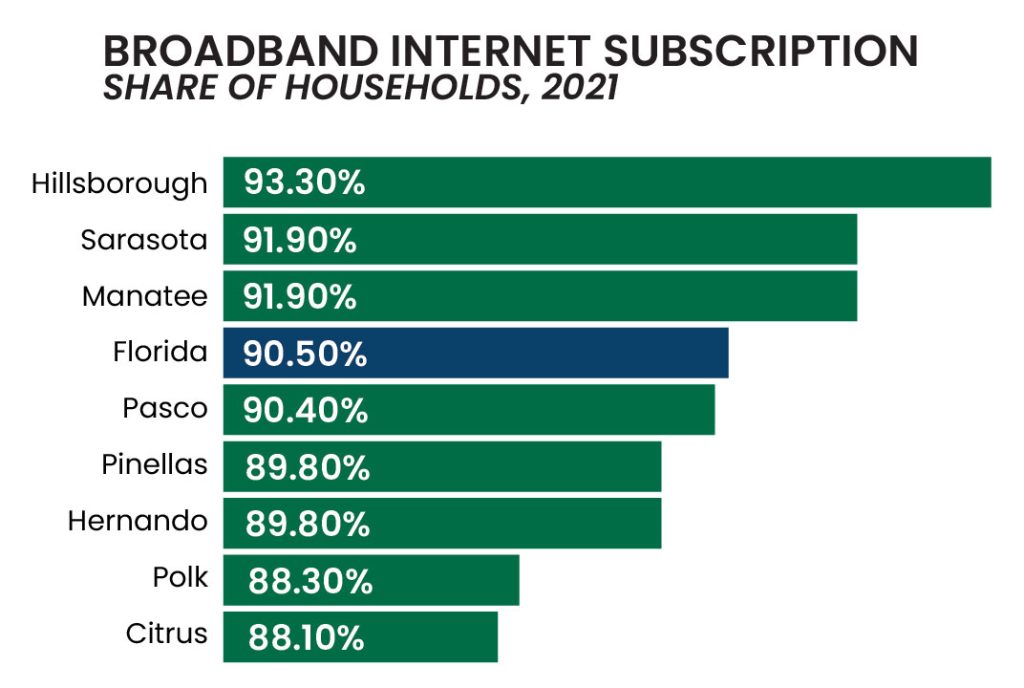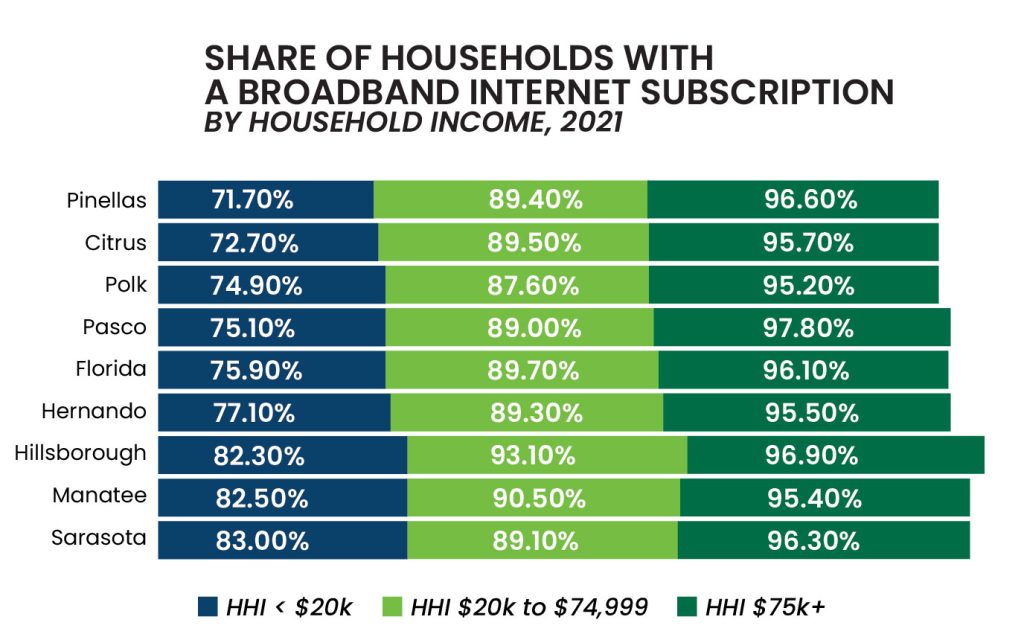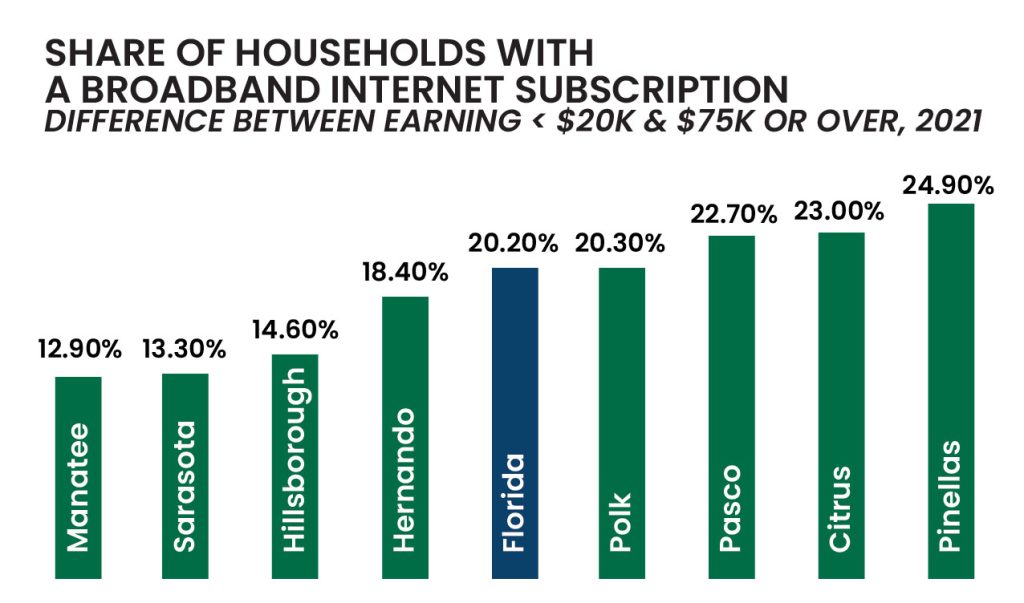HIGHLIGHTS
- The COVID-19 pandemic revealed the importance of broadband download and upload capacity requirements as more families work and learn from home.
- Broadband affordability leads to broadband accessibility. Since broadband adoption rates are closely linked to income levels, many income-constrained families are left behind from connecting to opportunities for a better, more prosperous life.
- High-speed broadband coverage is often more limited in low-income areas and between U.S. urban and rural populations because of infrastructure limitations.
Broadband is so influential in today’s society that we now consider it essential infrastructure. Broadband access enables people to pursue education, health care, workforce training, and development, use of government services, and lifestyle pursuits, such as worship, social engagement, and other activities that are good for mental health.
According to the Federal Communication Commission, a digital divide exists in the U.S. across income levels. Almost 14.5 million people lack access to terrestrial broadband, with 44% of adults earning less than $30,000 a year not subscribing to broadband at home.
The Biden Administration announced in June 2023 that Florida will receive an additional $1.17 billion in federal funding for high-speed internet access to expand connectivity and ease the digital divide. As part of the 2021 Bipartisan Infrastructure Law, the Broadband Equity, Access, and Deployment program has set a goal to connect all Americans to high-speed broadband internet by the decade’s end.



